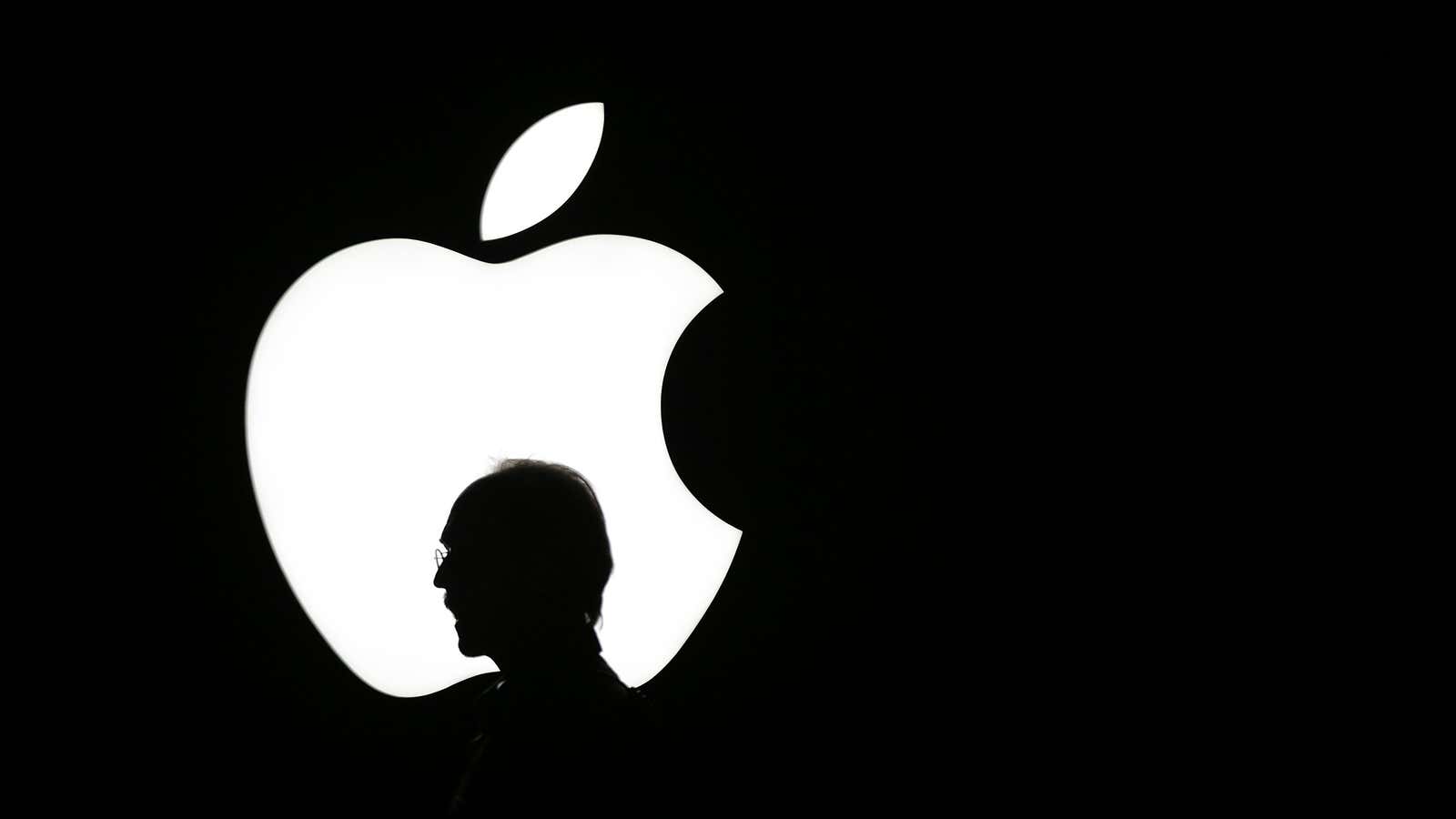Apple makes products.
People like these products.
Moreover, people purchase these products in large numbers.
Consequently, Apple makes money.
It makes a lot of money.
Apple makes more money than any company has ever made.
As a result, Apple is left with a large and growing pile of cash: more than $200 billion.
Who owns this money? In one sense, Apple does. But in another sense, it doesn’t.
Since shareholders own Apple, it’s shareholders that really own the money. Apple is just managing it on their behalf.
What should Apple do with its giant pile of money?
It’s very difficult to say how decent a job Apple is doing managing that pile of shareholder money.
There is a large and exhaustive literature that explores this type of situation, where companies serve as caretakers for cash that actually belongs to shareholders.
Historically speaking, companies have tended to pay this money out to shareholders in the form of dividends.
During the first half of the 20th century, those dividend payments were considered pretty important. Dividend payments represented the basis by which investors valued stocks, and for that reason the vast majority of companies paid them.
At their recent peak in 1978, two thirds of all companies listed on the Nasdaq, American Stock Exchange and New York Stock Exchange paid dividends. By 1999, that had fallen to 21%.
But subsequent research showed that while the number of firms paying dividends has fallen sharply, the actual amount of money paid out through dividends has continued to rise, with a smaller number of large industrial companies raking in a larger share of overall earnings, and paying larger chunks of cash.
Apple is one of those companies, having resumed paying dividends in 2012. It’s now one of the largest dividend payers in the world.
Buybacks
But there are other ways companies give shareholders their money back. In recent years, the most popular way has been through the repurchase of shares, also known as buybacks.
Over the last 30 years or so, companies have been leaning more toward buybacks over dividends. In part, that’s because capital gains on a rise in stock price is taxed at a lower rate than dividend income. (In other words, dividends are a “tax inefficient” way of giving shareholders their money back.)
Apple is also the source of the world’s largest ever buyback operations, with three of the top five biggest quarterly buybacks among S&P 500 companies, emanating from Cupertino.
Here’s where it gets weird
So, as we’ve established, Apple is a profit monster. And because of that, it has a ton of cash. Therefore, it can return some of that cash to shareholders.
But here’s something weird. By and large, it’s not returning its own cash to shareholders.
It’s borrowing new cash, and giving that to shareholders instead.
Why would they do that?
Well, for one reason, it’s because that $200 billion isn’t sitting in a pile in Tim Cook’s office in Cupertino.
Most of that money represents profits that Apple has made around the world. But if Apple were to repatriate that money to the US it would have to pay a significant chunk of it to the US government in the form of taxes. And given the low interest rates Apple is paying to borrow—back in 2013 it sold 10-year bonds with an interest rate of just 2.40%—it makes far more sense just to borrow money and give it to shareholders. (Especially after accounting for expectations that inflation will run roughly 1.50% over the next 10 years, making the “real,” or inflation adjusted, interest rate a low, low 1.00%.
Otherwise, Apple would have to repatriate its earnings and pay taxes on them.
But is it enough?
This is always the question. Back in 2013, investor/agitator Carl Icahn began banging the drum for debt-fueled buybacks. He didn’t get everything he wanted, but the mere specter of his involvement seemed to give the stock a lift. (Icahn him self made a tidy $400 million profit on the position he took and his liberal use of his media megaphone.)
To be sure, Apple is in a high-cost business, so having an decent amount of cash on hand helps pay for the expensive expenditures it needs to produce the next generation of sleek devices.
On the other hand, there are also risks of companies—even well-run companies—having too much money on hand. During the dotcom boom of the late 1990s, corporate executives vaporized billions in shareholder wealth through boneheaded mergers. (See: AOL Time Warner, JDS Uniphase.) And academic research has shown that when a company raises its dividend, it sends an important signal about the future profitability of the firm. (After all, you wouldn’t commit to paying shareholders if you weren’t reasonably confident you’d be able to do it.)
But all observers have to acknowledge that Apple shareholders are doing just fine. Since the end of 2011, the year before Apple reinstated its dividend, shareholders have seen a gain of more than 120% including both price increases and dividend payments. That trounces a more than 80% increase for the S&P 500 as a whole, including dividend payments.

As long as Tim Cook & Co. continue to deliver performance like that, any discussion of Apple’s balance sheet management remains largely academic.
